|
|
|
|
|
|
Yep, a welded nut with plenty of weld heat should get it free.
A lttle RTV sealant (is RTV petrol proof? - it is heat proof) should seal it but a nice thick gasket will also be a good idea.
|
| |
|
|
|
|
|
|
|
|
|
Yep, a welded nut with plenty of weld heat should get it free. A lttle RTV sealant (is RTV petrol proof? - it is heat proof) should seal it but a nice thick gasket will also be a good idea. Silicone is good to exhaust temps but 1200 degree silicone is also available. Its very handy on things like mk2 zephyrs etc due to the way the manifold mounts. |
| |
|
|
|
|
|
|
|
|
Just getting it level and a decent set of gaskets should do the trick.
Phil
|
| |
|
|
|
|
|
|
|
|
I Would think that small space between the manifold and engine would close up upon reinstallation? still, good to have a gasket in there. I went through similar trials with my dodge dakota's exhaust manifold. it was actually rusted/worn through so it had to go...but getting the studs/bolts off was a nightmare. it took what felt like weeks! I had access through the wheel well and did not pull the motor.
I tried the welded nut technique with no luck, but careful drilling was my answer. getting the first hole perfectly centered and drilling straight was the key. Then, like mentioned above, I was finally able to pick the old threads out of the hole, but what a chore.
One note, if a bolt or stud is still rusted in place after drilling, easy outs may not always work well...I broke one off in the head and only with luck got it out...they are hardened steel and almost impossible to drill....(you probably already know this....but...). So I say, use easy outs with some caution....They will take SOME torque on them...but not as much as you would think.
anyway...love the vids!...congrats on getting that thing up and running again!
JP
|
| |
I know its spelled Norman Luxury Yacht, but its pronounced Throat Wobbler Mangrove!
|
|
|
|
|
|
|
|
My neighbor with the welder is working these 2 weeks so isn't around. Another neighbor might have oxy-acetylene though.
I'm going to try heat and brute force first.
Phil
|
| |
|
|
|
|
|
|
|
|
Smacked the bolts a few times and tried to give them a twist. No joy (none expected).
More penetrating fluid applied.
--Phil
|
| |
|
|
|
|
|
|
|
|
Oxy on them to cherry red should release them, mini stilsons are good for stud removal too.
|
| |
|
|
|
|
|
|
|
|
Yeah. I'm not sure my propane torch will be enough concentrated heat to work.
Going to give it a go though. Hope I don't crack the manifold...
Phil
|
| |
Last Edit: Oct 7, 2019 20:34:47 GMT by PhilA
|
|
|
|
1951 Pontiac Chieftainpeteh1969
@peteh1969
Club Retro Rides Member 107
|
|
|
|
Phil
If you can add some Oxygen gas to the flame that will make the propane hotter for you.
|
| |
|
|
|
|
|
|
|
|
I have no method of adding an oxidizer, so I am going to have to just be careful
|
| |
|
|
|
|
|
|
|
|
If you do reach the point of having to drill, then left handed drill bits will be your friend(s). EZ-Outs are nasty little buggers and when they snap, you're screwed.
But saying this to the man who rewires old radios and rebuilds pre-Hydramatics is likely unnecessary!
BTW, I have the Bernzomatic kit that uses a can of MAPP-gas and a can of Oxygen, circa $50-60 at Home Depot or Lowes. The online reviews are bad because the valves are touchy (and the gas bottles ain't cheap) but sensitive, sophisticated fellows (like us...) can make them work. The torch is small but, not having or wanting a full size oxy-acetylene rig, this has been highly useful to me a number of times when I needed some real heat to budge something seized. John
|
| |
|
|
|
|
|
|
|
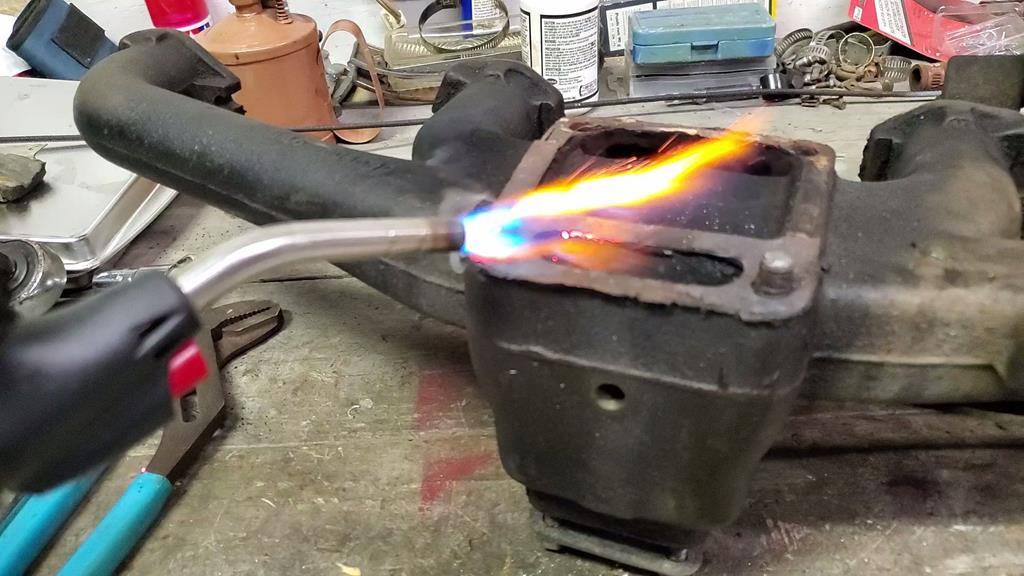 Had a good go at heating the things up. 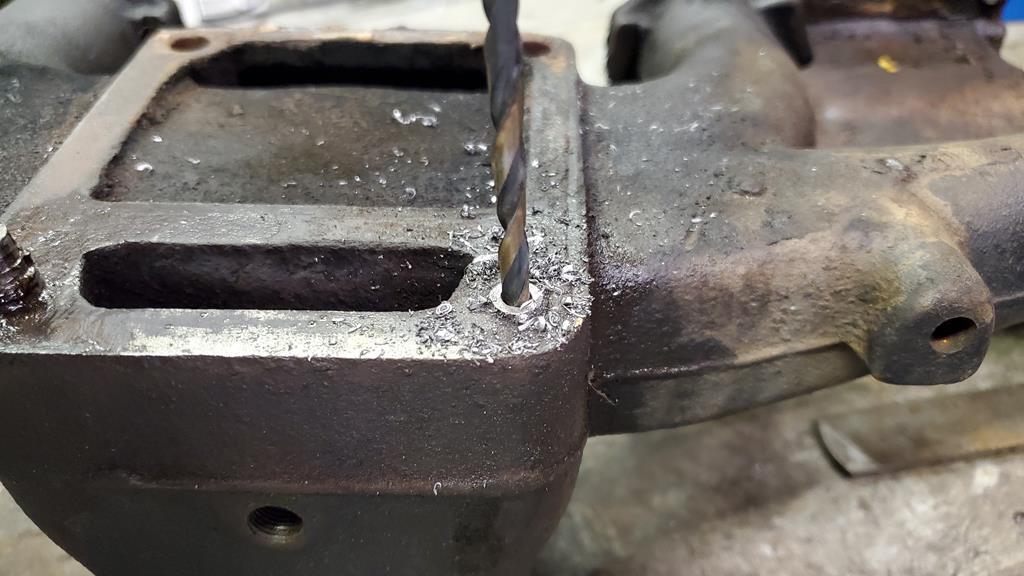 Net result the things twisted like putty. Ended up filing the tops flat, center punching them and drilling them out. 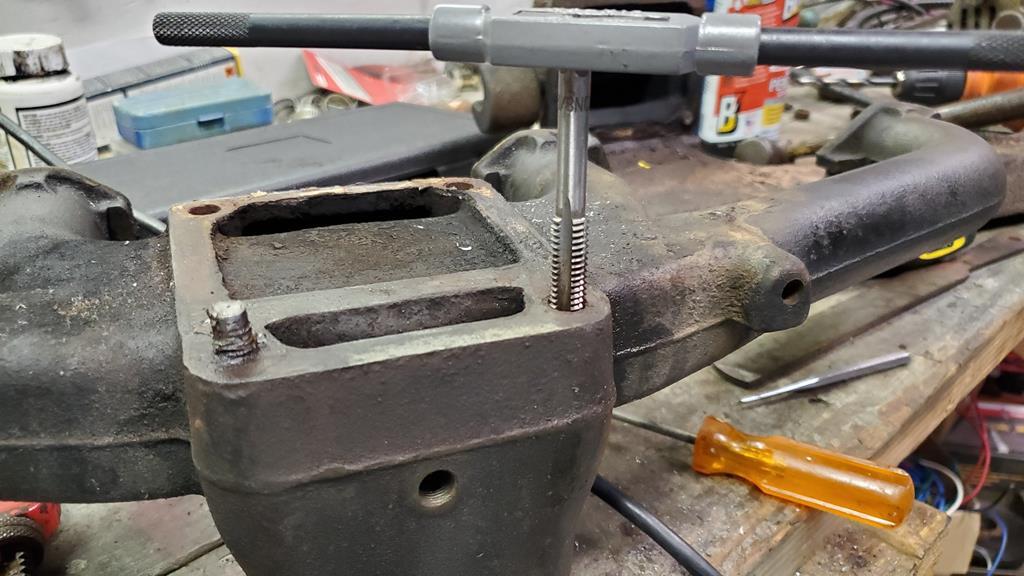 Cleaned the threads up with a tap. 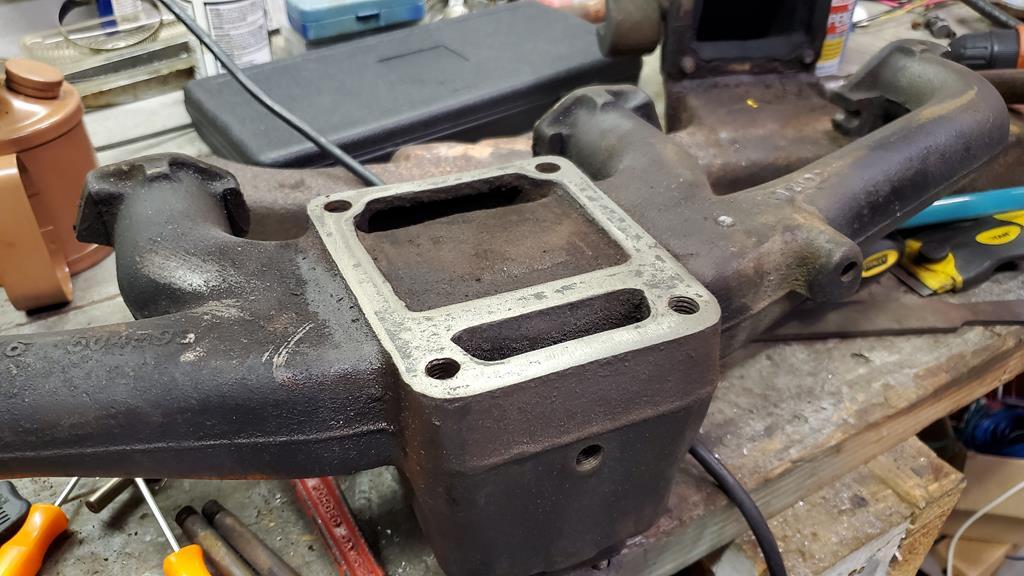 Repeat 2x. That's the intake manifold ok. The other two in the exhaust manifold are significantly more awkward to get at. I've already had to drill one oversize and am beginning to put a thread in the hole but it's bloody hard metal, slow going and frustrating. I've been offered a spare manifold if this one goes all Pete Tong so that's a blessing at least. Phil |
| |
Last Edit: Oct 8, 2019 3:59:51 GMT by PhilA
|
|
|
|
|
|
|
|
Well done Phil.
Done a few of those types of repairs over the years, always stress, in case it goes bad.
|
| |
|
|
|
|
|
|
|
Yep. Particularly when the drill bit isn't quite long enough and the chuck gets in the way of things and the damn thing doesn't go in square despite the center punch being accurate. 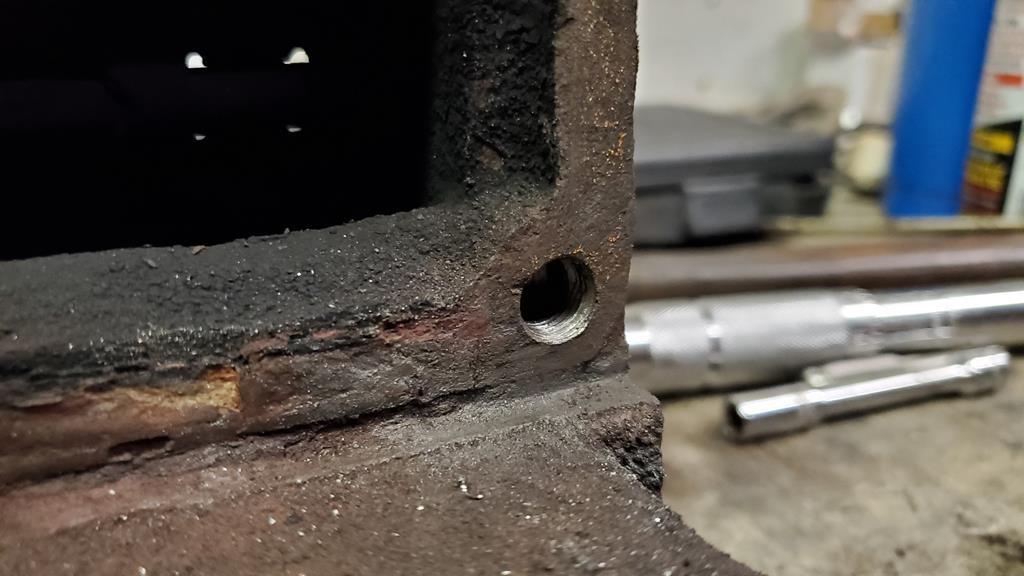 Tapping a thread in old, hard cast iron is ugly work, too. That's not finished yet. I'mma try get me some bolts tonight and see how well they bite. --Phil |
| |
Last Edit: Oct 8, 2019 12:58:56 GMT by PhilA
|
|
|
|
|
|
|
|
Looking at it, that may be recipient of a helicoil.
|
| |
|
|
|
|
|
|
|
|
I have helicoiled rover V8 manifolds before when the stud holes were shot and it's worked well.
Keep up the great work!
|
| |
|
|
|
|
|
|
|
|
blimey, the engine must think it's trying to suck a melon up a drinking straw with that inlet arrangement?
|
| |
'80 s1 924 turbo..hibernating
'80 golf gli cabriolet...doing impression of a skip
'97 pug 106 commuter...continuing cheapness making me smile!
firm believer in the k.i.s.s and f.i.s.h principles.
|
|
|
|
|
|
|
blimey, the engine must think it's trying to suck a melon up a drinking straw with that inlet arrangement? Pretty much, but I think the manifold is better flowing than the head. Don't forget though, this engine is not all about high speed- it's run out of revs before most modern engines have even really started to get going. The main problem is that at higher RPM that imbalance in runner length and the way the intakes are siamesed means it likes to lean out the outer cylinders- it would overheat and consequently seize if run at high RPM for extended periods (think motorway running trying to keep up with modern traffic). At low RPM it is... adequate. That's where this engine is mainly designed to be used anyway. It's no hot rod. --Phil |
| |
|
|
|
|
|
|
|
I bought some bolts and continued to drill out the broken bolt, having pretty much finished the thread on the forest manifold hole. I may have located the use of a sanding table also. Between times I popped the end off the alternator. 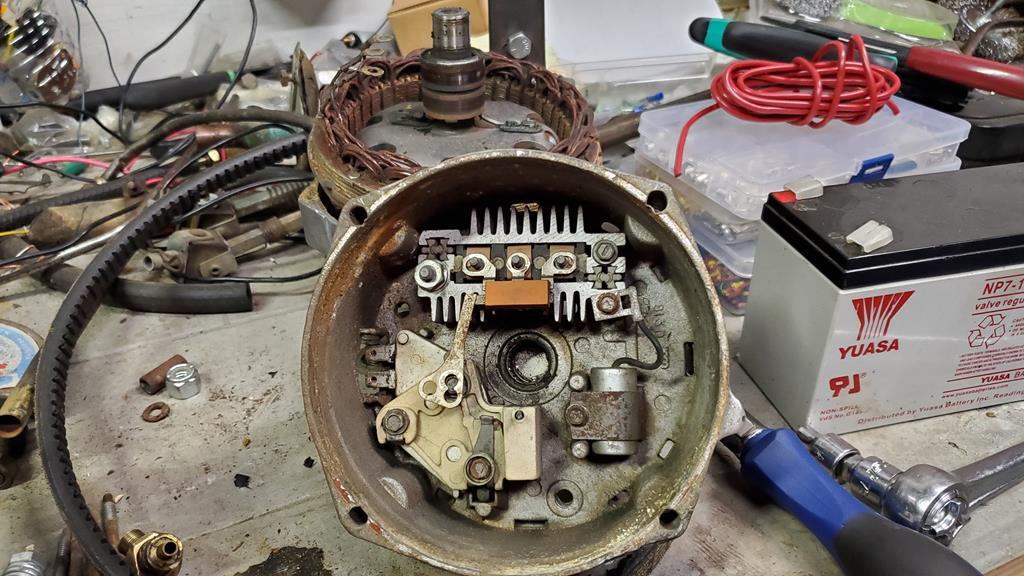 Rectifier pack tested good. Capacitor tested good. Diode trio (the little orange bit) that tells the regulator what to do? Broken! That'll be why it isn't charging properly and the light doesn't go off. I hope. Phil |
| |
|
|
|
|
|
|
|
Is that little orange bit available to buy, or can you just unsolder/ resolder old diodes for new?  |
| |
|
|













